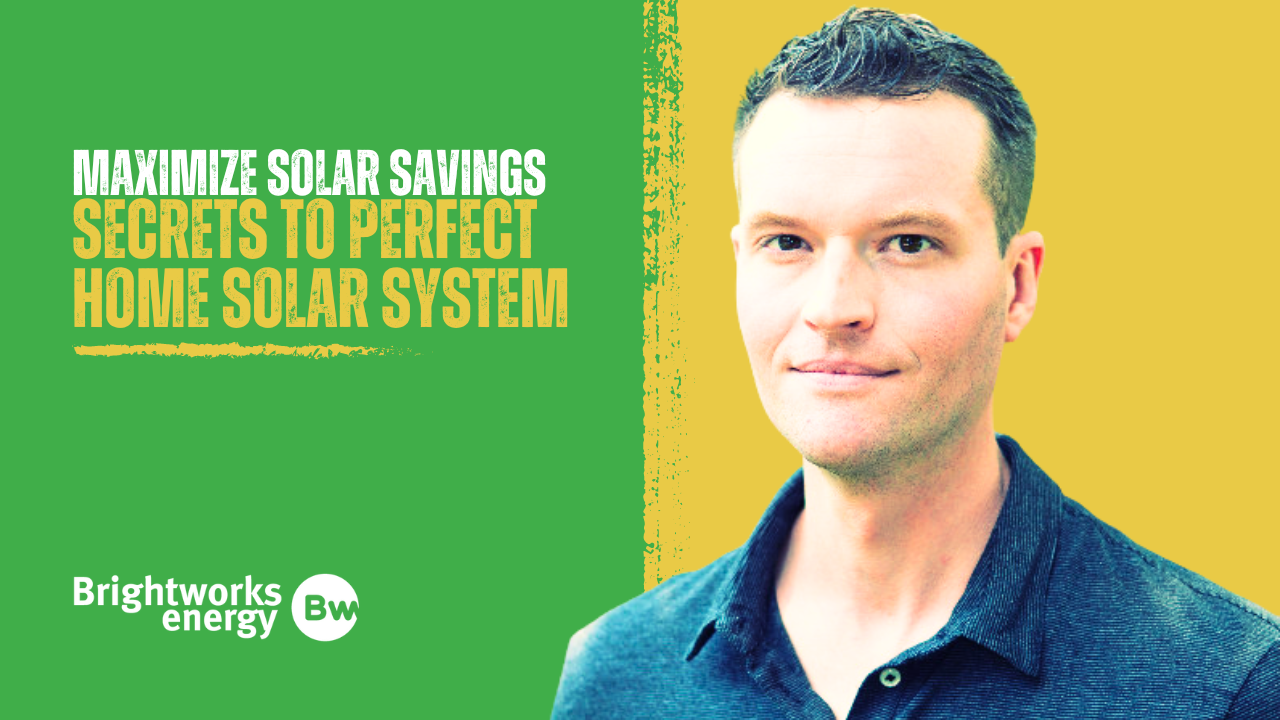When it comes to residential solar, many homeowners aim for a system that meets as close to 100% of their current power consumption as possible.
However, designing such a system involves numerous factors. Here at Brightworks Energy, we understand the complexities that come into play when creating large-scale solar systems.
What happens if your solar system produces excess power and your area doesn’t accept it back to the grid with net metering? Or if your system is too small, requiring costly upgrades down the road? Both scenarios can create new headaches for the future if your solar system is not sized correctly from the start.
In today’s blog, we review the intricacies and considerations necessary for designing the biggest possible solar system.
Regulatory Requirements and System Size
One of the primary considerations in designing a large residential solar system is regulatory compliance. In Ontario, for example, residential systems over 10 kilowatts AC require comprehensive engineering studies, classifying the system as a small generator. This classification can incur additional project costs of around $35,000 to $40,000.
To avoid these costs, we often cap residential systems at 9.6 kilowatts AC, especially when the main distribution panel is a 200-amp service. This limit ensures compliance with the electrical code, which restricts the amount of current we can feed back into the bus bar.
Future Energy Needs
Future energy needs are another crucial factor. Initially, we design the system to meet 100% of the customer’s current consumption. However, if a customer plans to add high-consumption appliances (such as a second electric vehicle) we overbuild the system by an additional percentage, typically up to 130-135%. This approach ensures that the system can accommodate future usage without requiring significant modifications.
Equipment Selection
Selecting the right equipment is vital for the efficiency and effectiveness of large solar systems. At Brightworks Energy, we often use the Growatt hybrid inverter, which allows up to 100% overbuild capacity. This means a 10-kilowatt AC inverter can handle 20 kilowatts of DC input, maximizing efficiency and output. In contrast, most standard inverters only allow a 20-55% overbuild, which wouldn’t suffice for larger needs.
Comparing Quotes and Ensuring Value
When comparing quotes from different providers, customers should be wary of oversized systems that exceed their consumption needs. Under the net metering program, you’re not compensated for surplus energy fed into the grid, so the goal is to match your consumption as closely as possible. If one provider suggests a 12-kilowatt system and another suggests 20 kilowatts, it’s essential to question the rationale behind the larger system.
Case Study: Almonte, Ontario Installation
A recent installation in Almonte, Ontario, serves as a perfect example. The customer wanted a 20-kilowatt solar system on their roof, but we had to stay within the 10-kilowatt AC limit to avoid additional engineering studies. By using the Growatt hybrid inverter, we were able to significantly overbuild the DC side. We optimized the design to maximize solar generation while keeping costs economical and staying within regulatory limits.
Final Thoughts
Designing large-scale residential solar systems involves balancing efficiency, regulatory compliance, and future energy needs. The process requires a careful assessment of the customer’s current and projected energy consumption, compliance with local electrical codes, and strategic equipment selection to optimize performance and cost-effectiveness.
Customers seeking to maximize their solar investment should prioritize designs that align closely with their energy consumption patterns to avoid unnecessary costs and inefficiencies. Future-proofing the system is a smart way to accommodate potential increases in energy usage, such as adding electric vehicles or other high-consumption appliances.
For homeowners exploring large solar installations, it’s important to engage with experienced designers who can provide case studies demonstrating their ability to deliver optimized and compliant systems. By doing so, customers can ensure their investment not only meets their immediate energy needs but also adapts to future demands, making the transition to sustainable living both practical and economically sound.
At Brightworks Energy, we meticulously plan and execute each detail—from panel stacking to loading and storage—to ensure minimal disruption and maximum efficiency. Our team takes pride in our ability to manage complex projects smoothly, backed by a dedicated team of experts and extensive experience.
If you require our services, don’t hesitate to reach out. Let’s navigate your solar projects together with precision and efficiency.

